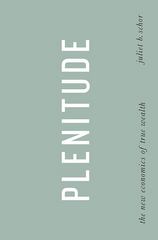Actuarial economics;
The profit per client-day made by a privately owned health centre depends on the variable costs involved. Variable costs, over which the owner of the health centre has no control, take one of three levels 0, = high, 0, = most likely, 0, = low. The owner has to decide at what level to set the number of client-days for the coming year. Client-days can be eitherd, = 16, d, = 13.4 ord, = 10 (each in 000s). The profit ($) per client-day is as follows: d 85 95 110 105 115 130 125 135 150 (i) Determine the Bayes criterion solution based on the annual profits, given the probability distribution p(0,) = 0.1, p(0,) = 0.6, p(0;) = 0.3. [3] (ii) Determine both the minimax solution and the maximin solution to this problem. [2]An insurance company operates a No Claims Discount system for its motor insurance business. with discount levels 0%, 15%, 3% and 513%. The full annual premium is 5131]. The rules for moving between discount levels are: c If no claims are made during a year* the policyholder moves to the next higher level of discount or remains at the maximum discount level. I If one or more claims are made during a year. a policyholder at the 3G% or 513% discount level moves to the 15% discount level and a policyholder at the 0% or 15% discount level moves to, or remains at* the [lit discount level. 1Fthhen an accident occurs, the distribution of the loss is exponential with mean L. In the event of an accident. a policyholder will claim only if the loss is greater than the total extra premiums that would have to be paid over the next three yearsI assuming that no further accidents occur. For each discount level, calculate: {i} the smallest loss for which a policyholder will make a claim. [3] {ii} the probability of a claim being made in the event of an accident occurring. [3] 3 (i) Loss amounts from a particular type of insurance have a Pareto distribution with parameters a and 2. If the company applies a policy excess, E, find the distribution of claim amounts paid by the insurer. [3] (ii) Assuming that a = 4 and ) = 15, calculate the mean claim amount paid by the insurer (a) with no policy excess (E = 0), (b) with an excess of 10 (E = 10). [2] (iii) Using your answers to (ii), comment on the effect of introducing a policy excess. [2] [Total 7] 4 The proportion, 0, of staff working in a particular office who have access to the internet at home is to be estimated. Of a sample of 50 people questioned, 29 have access to the internet at home. (i) Using a suitable uniform distribution as the prior distribution, calculate an estimate of 0 under the quadratic loss function. [3] (ii) Using instead a beta distribution, with parameters a = 4 and B = 4, as the prior distribution for 0, calculate the Bayesian estimator for 0 under the "all-or-nothing" loss function. [4]The following table shows incremental claims relating to the accident years 199?. 1999 and 1999. It is assumed that claims are fully runvo by the end of development year 2. Estimate total outstanding claims using the chainvladder technique ignoring ination. Incremental Claims Development Your Accident Your 9 I 2 199'? 259'? 1991 251 1998 2953 1293 1999 3190 [T]










